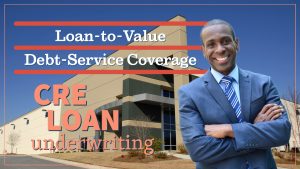Lenders, highly vested in the success of both their loans and borrowers, utilize a number of key mitigants to manage the risk of default.
Objectives
- Distinguish between monetary and technical default.
- Consider the remedies to default that are available to lenders.
- Learn how to mitigate the risk of default.
Listen to This Article
As a lender, the last thing you ever want to do is foreclose on a property. We’re in the business of originating and servicing loans. That’s our area of expertise and it represents the most efficient use of our time. Whenever our focus is taken away from those activities to manage a troubled loan, it’s likely to result in lost opportunities, lower productivity, and, ultimately, less profit. For these reasons, lenders are highly vested in the success of their borrowers.
Default Can Be Monetary or Technical
Despite expectations to the contrary, borrowers sometimes default on their loans. Default, which can be either monetary or technical, is when a borrower fails to meet loan obligations. Monetary default is worse, as it means the borrower has stopped making loan payments or didn’t pay off the loan balance when it came due. Technical default usually means the borrower hasn’t taken required actions, such as providing an updated rent roll, or has engaged in prohibited activities, such as transferring ownership interest.
When monetary default occurs, the initial step is typically to contact the borrower. Perhaps it was simply an oversight and can be resolved with a late fee. However, if the reason for default is financial hardship, things become much more complicated. In this situation, assuming that the borrower’s troubles are considered temporary, the lender may decide that a loan workout is an appropriate resolution. This means that the lender is willing to modify the loan in some way to avoid foreclosure.
Loan Modification, Acceleration, and Foreclosure
One of the most common options is forbearance, the reduction or suspension of loan payments for a specified period of time. Other examples of loan modification include extending the term, lengthening the amortization schedule, allowing the borrower to access reserve accounts, or even lowering the interest rate. To be clear, some modifications may result in a less profitable loan, so lenders are going to carefully consider their options.
If attempts at a workout fail, or it was never considered a viable option, the lender may choose to accelerate the loan. Acceleration is the remedy of calling the note and demanding immediate payment of all principal, interest, penalties, and fees that are due the lender. If the borrower doesn’t comply with this, the lender may start foreclosure proceedings. In the United States, depending on the state laws where the property is located, foreclosure may or may not be processed in the court system. The lender may also sometimes be taking on the unwanted responsibility of completing a development project or righting the mismanagement of an underperforming property.
How to Mitigate Risk
With all of that in mind, how can lenders mitigate the risk of default? It basically comes down to three areas of focus, and, significantly, two of them take place before the loan is ever originated. First up is proper underwriting. Lenders must have a well-reasoned credit box, which is basically a set of criteria they apply to every prospective real estate loan. It includes such considerations as property types and locations, as well as more technical considerations such as loan-to-value and debt-service coverage ratios. Doing the needed due diligence and underwriting to confirm that a prospective loan fits within your credit box is paramount to success as a lender.
Coming in a close second are loan documents, or loan docs. Lenders devote much time to creating their loan docs, purposefully including all the needed representations, warranties, covenants, and remedies to best protect their capital. These loan docs will be available in different versions, depending on the state where the property is located and how recourse needs to be structured given the perceived risks of specific loans. The latter point is extremely important as recourse has a direct bearing on the lender’s ability to pursue a deficiency judgement against the borrower when the sale of the foreclosed property doesn’t cover the amount of the debt.
When done properly, good underwriting and strong loan docs set everything up nicely for success. The third mitigant to default risk, vigilant monitoring of both the loan and the property, takes place after the loan originates. Even if a borrower is paying as agreed, lenders should confirm on a regular basis that the property is in good condition and well operated. This is typically accomplished by conducting property inspections and reviewing updated rent rolls and operating statements.



















